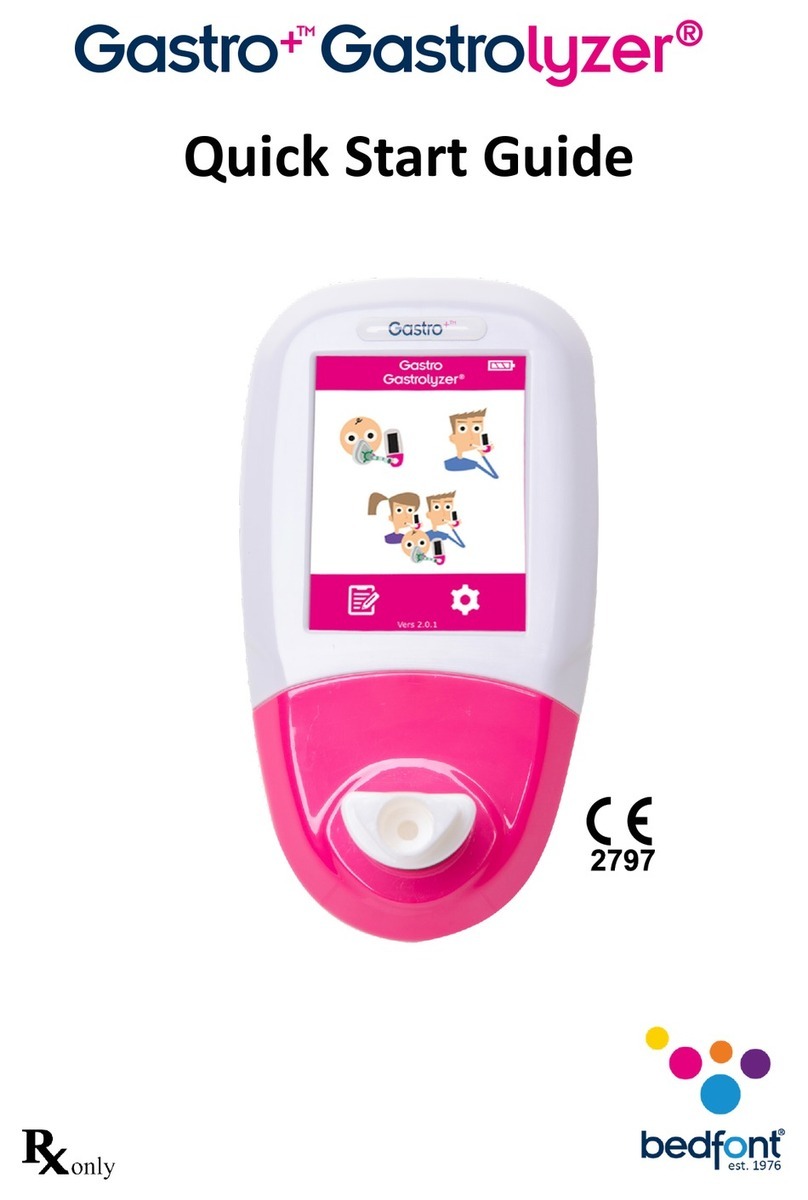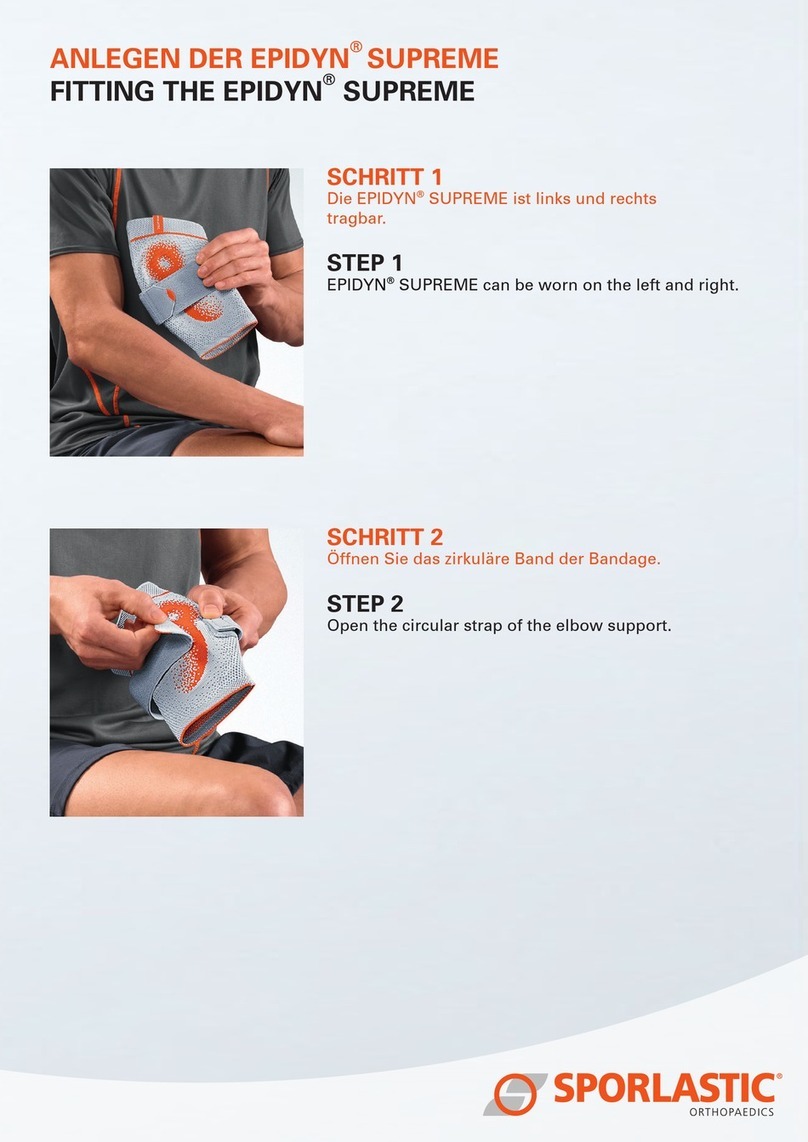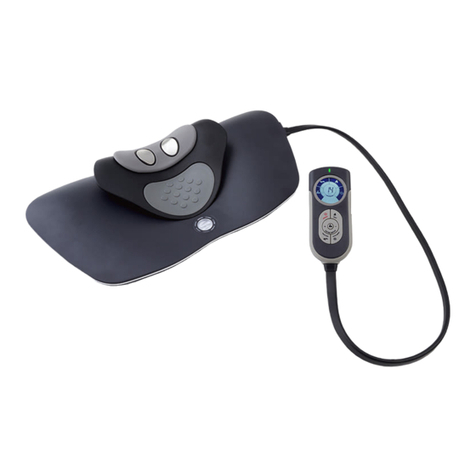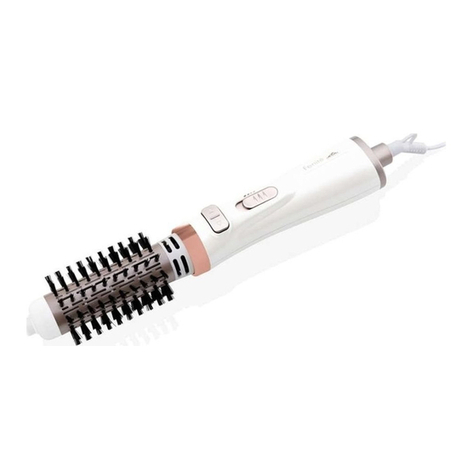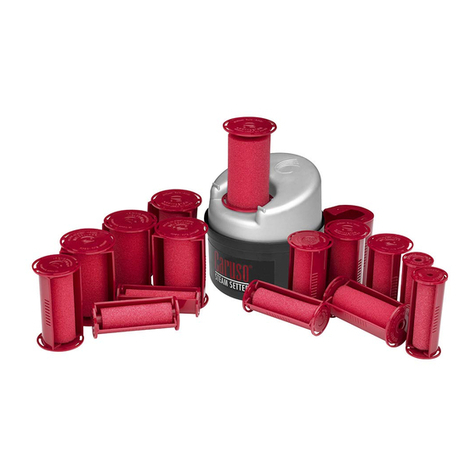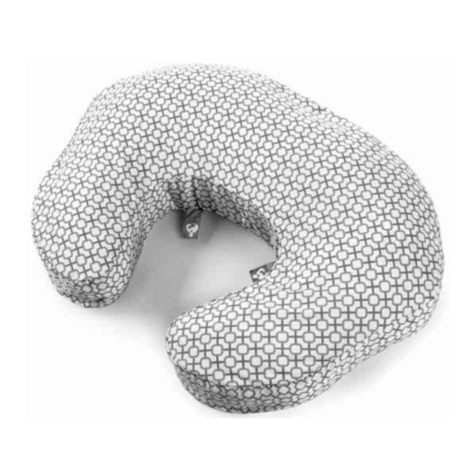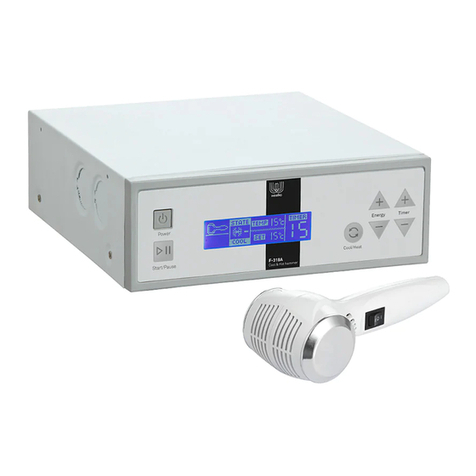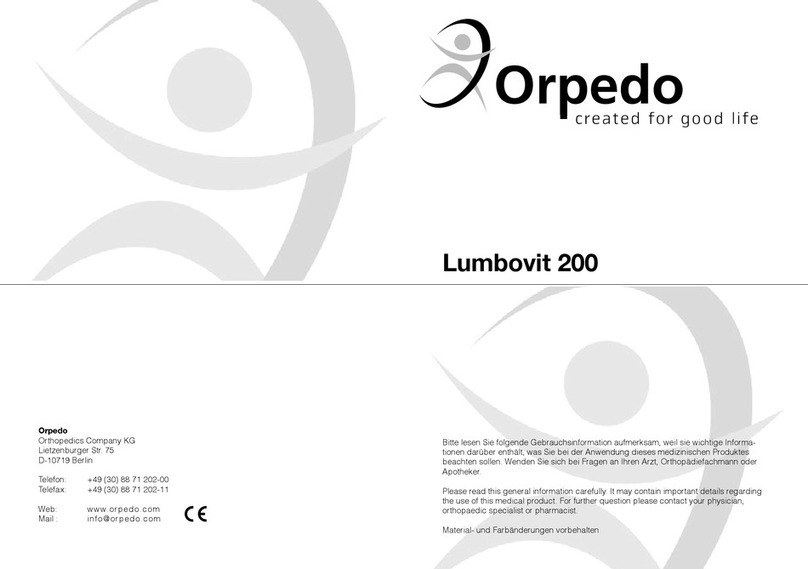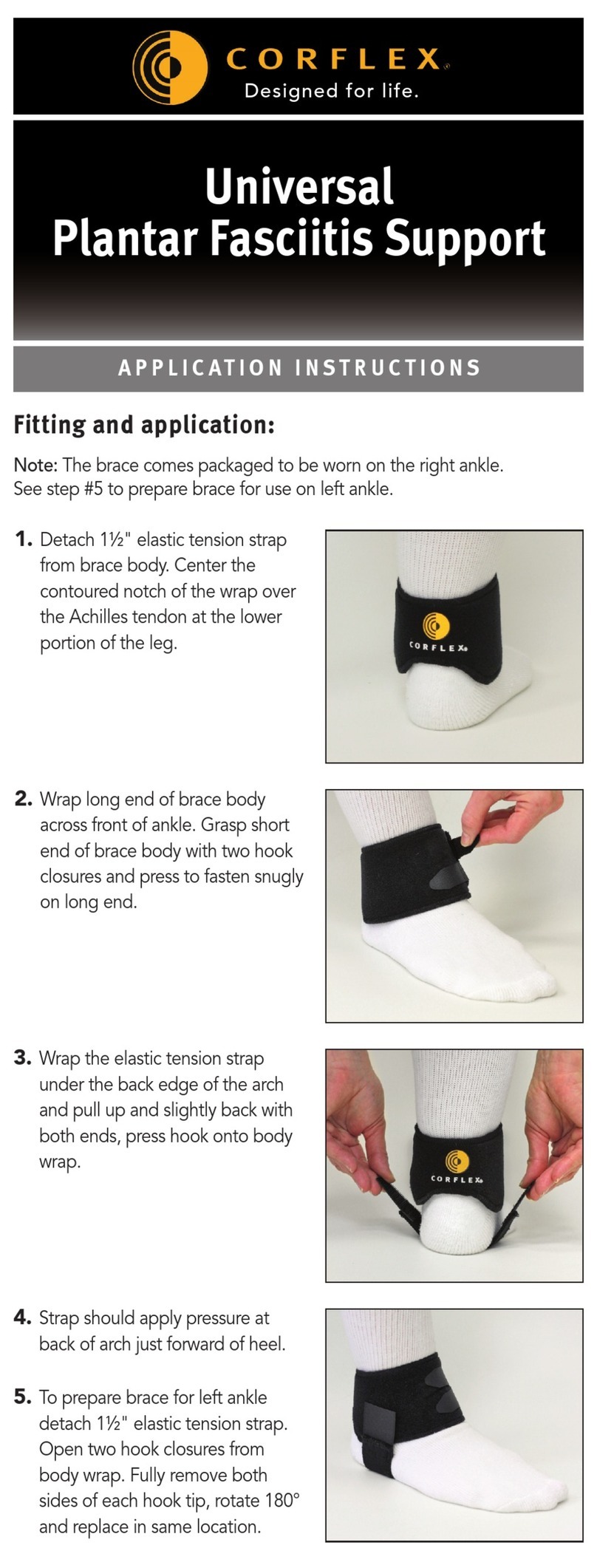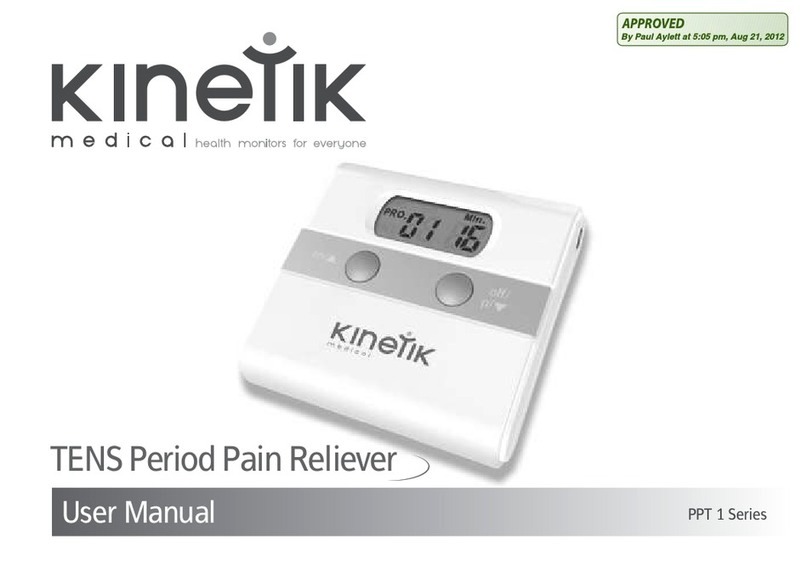Bedfont piCO+ Smokerlyzer User manual

0086
breath analysis is the new blood test

2
piCO+Operating Manual
English
www.bedfont.com
Contents
1Introduction and Intended Use 3
2Quick Start Guide 4
3Pack Contents and Specification 5
4Instrument Layout 6
5Display Symbols 7
6Warnings and Maintenance 8
7Operation 9-10
8Calibration 11-12
9Set-up: User Profiles 13
10 Set-up: Sounder Operation 14
11 Troubleshooting 15
12 COdata+Software 16
13 Frequently Asked Questions 17
14 Returns Procedure 18
15 Spares and Warranty 19

3
piCO+Operating Manual
English
Intended Use
The piCO+Smokerlyzer®is a breath carbon
monoxide monitor intended for multi-patient
use by healthcare professionals in smoking
cessation programmes and research.
Carbon monoxide (CO) is a toxic,
odourless, colourless, tasteless gas formed
by incomplete combustion of organic
material at high temperatures with an
insufcient oxygen supply.
When inhaled, CO competes successfully
with oxygen in the bloodstream to form
carboxyhaemoglobin (COHb). This starves
body tissues of the oxygen they need to
function and repair themselves in day-to-
day life. CO can remain in the bloodstream
for up to 24 hours, depending on a range
of factors including physical activity, gender
and inhalation intensity. The half life is
about 5 hours.
Correlation of CO (ppm) and
carboxyhaemoglobin (%COHb)
Breath carbon monoxide is measured
in parts per million (ppm CO) and blood
carboxyhaemoglobin in percentages
(%COHb). The two are compatible and
convertible, and the piCO+Smokerlyzer®
displays both measurements. Clinical
research has shown that a useful
relationship between carbon monoxide and
carboxyhaemoglobin can be identied after
a short period of a person holding their
breath. CO readings demonstrate the level
of poisonous inhaled CO, while the COHb
reading shows the percentage of oxygen
that has been replaced in the bloodstream.
The cut-off point between smoker and
non-smoker is regarded as 6ppm CO. The
piCO+Smokerlyzer® identies a non-smoker
as 0-6ppm, a low-dependence smoker as
7-15ppm, and strongly addicted smokers as
over 15ppm.
The piCO+Smokerlyzer®has been designed
so that it can also be used with young
smokers. As their smoking habits and views
are generally different from adult smokers,
the ranges can be altered to 0-4ppm for a
non-smoker, 5-6ppm a light smoker and
7ppm+ a more frequent smoker.
Other cut-off points can be adopted as
well as smoking classication at higher
CO levels. The piCO+ has a third prole
which can be set by the user with COdata+
software for complete exibility to suit most
circumstances.
Introduction

4
piCO+Operating Manual
English
www.bedfont.com
Quick Start Guide
1 Turn on the monitor by holding the
button down for three seconds.
2 Attach the breath sampling D-piece and
a new mouthpiece.
3 Inhale and double click the button to
start a breath test.
4 The user should hold their breath for
the 15-second countdown. If they are
unable to hold their breath for the full
countdown, see Operation – page 9.
5 A beep will sound during the last three
seconds of the countdown.
6 Blow slowly into mouthpiece, aiming to
empty the lungs completely.
7 The carbon monoxide (ppm) and
percentage carboxyhaemoglobin
(%COHb) readings will rise and the peak
values will remain on the screen. The
coloured LEDs will light up accordingly –
see the interpretation table on page 10.
8 Remove the D-piece between tests to
allow fresh air to circulate around the
sensor.
9 To repeat the breath test, double click
the button to return to main display and
continue from step 2.
10 To switch the monitor off, hold the
button down for three seconds. The unit
will auto power off after ve minutes of
inactivity.

5
piCO+Operating Manual
English
1
3
4
5
6
2
Pack Contents and
Specication
1 Instrument
2 Carry pouch
3 Operating Manual
4 Breath sampling D-piece
5 Disposable cardboard mouthpiece
6 2 × AA batteries
Infection control and maintenance guidelines
(not shown)
Specication
Concentration range: 0-100ppm
Display: LCD with 1ppm increments
Detection principle: Electrochemical sensor
Accuracy (repeatability of readings): ±2%
H2cross-interference: <10%
Power: 2 × AA (LR6 or equivalent) alkaline batteries
Response time: Typically <30 seconds to 90% FSD
Operating temperature range: 0-40ºC (storage 0-50ºC)
Operating humidity: 10-90% (storage 0-95%) non-condensing
Sensor operating life: Approx. 5 years, 2-year warranty
Sensor sensitivity: 1ppm
Dimensions: Approx. 45 × 75 × 120 mm
Weight: Approx. 200g including batteries
Monitor construction: Body: Polycarbonate/ABS blend with elastomeric overmould.
D-piece: Polypropylene
0086

6
piCO+Operating Manual
English
www.bedfont.com
20
3
V
2
x
AA/LR6
Bedfont
Scientific
Ltd
ME1 3QX,
England
T:
F:
E:
ask@bedfont.com
www.bedfont.com
0086
1
2
3
4
5
7
6
10
9
8
2
Instrument Layout
1 Display
2 Coloured LEDs
3 Button
4 Aperture for D-piece
5 Breath sampling D-piece
6 Securing lug on D-piece
7 Exhaust port for breath sample
8 Sounder
9 USB connector
10 Cardboard mouthpiece
11 Battery compartment
12 Reset button
13 Battery cover
12
11
Reset
+44(0)1634 673720
+44(0)1634 673721
13

7
piCO+Operating Manual
English
1 Start-up screens:
2 Battery condition: OK: Flat: Dead:
3 User prole: Adult: Adolescent: Custom:
4 Sounder: On: Mute:
5 Pointer:
6 Start breath test:
7 Enter calibration mode:
8 Enter set-up mode:
9 Inhale:
10 Breath-hold and countdown:
11 Exhale for breath test:
12 Peak CO reading (ppm and %COHb):
13 Set instrument zero in fresh air:
14 Apply calibration gas at 20ppm:
15 Calibration pass/fail: Pass: Fail:
16 Calibration reminder:
17 User prole selection:
18 Select adult user prole:
19 Select adolescent user prole:
20 Select custom user prole (if set via COdata+software on PC):
21 Contact Bedfont or distributor for help:
22 D-piece reminder
23 Return:
9.2
Display Symbols

8
piCO+Operating Manual
English
www.bedfont.com
Warnings and Maintenance
Warnings
People with lung disease or chest ailments
may not be able to achieve the 15-second
breath hold. In such cases, the user should
inhale and hold their breath when the breath
test is started, and exhale, if necessary,
before the countdown has completed.
A new mouthpiece should be used for each test.
Hands should be washed regularly in
accordance with infection control practice.
Wipe the instrument and the external
surfaces of the D-piece with a product
specically developed for the purpose.
Suitable Instrument Cleansing Wipes are
available from Bedfont.
NEVER USE ALCOHOL, cleaning agents
containing alcohol or other organic solvents
to clean the monitor. Long-term exposure to
such vapours will damage the internal CO
sensor.
Under no circumstances should the monitor
be immersed in or splashed with liquid.
Cleaning
Routine Maintenance
When the calibration reminder prompt is
displayed (see page 11), the instrument
should be calibrated using Bedfont 20ppm
CO in air calibration gas. Once calibration
has been carried out a reminder will recur in
six months.
Replace batteries when the battery symbol
resembles or .
Replace the breath
sampling D-piece when
prompted by the unit
(every 30 days) or if
it is visibly soiled or
contaminated.
The D-piece cannot be
cleaned or sterilised.
Batteries
Batteries should be removed if the
instrument is not likely to be used for
some time.
Additional technical information is available
on request from Bedfont or your local
distributor.

9
piCO+Operating Manual
English
Ensure that two AA batteries are correctly
inserted in the battery compartment.
The single button controls all functions:
• One long button press (>3 seconds) turns
the unit on.
• A single click scrolls the pointer through
the list of options.
• A double click selects the required option.
• One long button press (>3 seconds) turns
the unit off.
Press and hold the button for three
seconds until the display
becomes active. Release the
button. After a 10-second
warm-up period, during which
a start-up screen is displayed,
the main menu will appear.
If a appears instead of
the main menu, it means
that the instrument has failed to set a fresh
air zero during start-up, perhaps because
the ambient air was not free of carbon
monoxide. Ensure that the instrument is in
fresh air and then double click the button
to repeat the start-up test. If it fails again,
please see Troubleshooting – page 15.
When the pointer is opposite the picture
of an exhaling face, the piCO+is ready to
start a breath test. The green LEDs will
ash twice to indicate that the instrument
is ready.
Operation
Attach a breath sampling D-piece and a
new cardboard mouthpiece to the piCO+.
Check that all connections are pushed
rmly together.
To start a breath test, the patient should
inhale and hold their breath. Double
click the button to initiate the 15-second
countdown display.

10
piCO+Operating Manual
English
www.bedfont.com
Ensure that the breath is held
throughout the countdown. The
beep will sound during the last
three seconds of the countdown.
Once the countdown reaches zero, exhale
slowly but gently into the mouthpiece. Aim
to empty the lungs as much as possible.
If the patient cannot hold their breath for
the full 15 seconds, they should commence
exhalation at a comfortable point, but still
exhale completely.
The display will show a rising ppm value
alongside an equivalent %COHb reading.
The coloured LEDs will light up according
to the selected user prole.
The sounder will beeps at an increasing
frequency, according to the concentration
of CO measured. To temporarily mute the
sounder, single click the button.
The peak reading during the breath
exhalation will remain on the
display. The test is complete
when the pointer and ‘return’
symbols appear at the bottom
of the display.
At this point, a single click of the button will
temporarily silence the sounder, if it is on.
To start another breath test, double click the
button to return to the main display. A new
mouthpiece should be used with every test.
Removing the D-piece between tests will
allow fresh air to circulate around the
sensor. It is good practice to wash your
hands after removing the D-piece.
If no further tests are required, the piCO+
should be turned off by holding the button
down for three seconds. If left on, the piCO+
will automatically turn off after ve minutes
of inactivity.
To re-calibrate the instrument, follow the
instructions on page 11.
To change the user prole from adult to
adolescent (or a custom prole if one has
been set using the COdata+user software),
see the instructions on page 13.
To permanently silence the sounder during
the breath test, follow the instructions on
page 14.
Operation (continued)
LED colour Description User Prole 1: User Prole 2:
Adult (ppm) Adolescent (ppm)
Green Non-smoker 0-6 0-4
Yellow Danger zone 7-10 5-6
1 Red Smoker 11-15 7-10
2 Reds Frequent smoker 16-25 11-15
3 Reds Addicted smoker 26-35 16-25
4 Reds Heavily addicted smoker 36-50 26-35
4 Reds ashing
Dangerously addicted smoker
51+ 36+

11
piCO+Operating Manual
English
3
2
4
1
●Ensure that the instrument is surrounded
by fresh air. With the pointer now
opposite the ‘zeroing’ symbol, double
click the button to set the instrument
to zero. If the zeroing has been
successful, a tick will be displayed.
If the zeroing fails, a
will be displayed
(see Troubleshooting –
page 15). Double click
the button to return to the
calibration menu.
1.5 l/m
1.0 l/m
0.5 l/m
1
2
Calibration
●Instruments are calibrated before leaving
Bedfont.
●Calibration reminders
will prompt the user to
calibrate the unit every six
months
●The calibration gas
required is Bedfont 20ppm carbon
monoxide in air.
●Ensure the ne control valve is in the ‘off’
position.
●Screw the ne control valve and ow
indicator assembly to the gas can. This
is best done by screwing the gas can
into the valve.
●Turn the instrument on in
the normal way. When the
main menu appears, scroll
down to the symbol of the
gas cylinder with a single
click of the button. Double
click the button to select
the symbol.
Bedfont Calibration Kit
1. Fine control valve
2. Flow indicator
3. Gas cylinder, 20ppm CO
in air
4. Calibration adapter and
tube

12
piCO+Operating Manual
English
www.bedfont.com
●If the reading is between 15 and 25ppm,
the calibration value will be automatically
set in the instrument as 20ppm and
a tick will be displayed to show a
successful calibration. If the reading is
outside these limits, calibration fails, and
a is displayed (seeTroubleshooting
section – page 15).
●The pointer and ‘return’ symbol re-appear
at the bottom of the display to indicate
that the process is complete and to allow
the user to double click the button to
return to the previous menu page.
● Turn off the gas ow, remove the D-piece
sampling system and disconnect the
calibration adapter from the D-piece
sampling system.
● Unscrew the ne control valve and ow
indicator from the gas can and store them
safely. If the valve is left attached to the
can, gas could escape.
●The piCO+is now calibrated and ready
for use.
●The piCO+will prompt the user to
calibrate the unit again in six months.
●Single click the button to
scroll down to the 20ppm
gas cylinder symbol.
Double click the button to
select the symbol.
● Immediately open the ne
control valve and allow
the gas to ow at 1 litre per minute.
● To maintain this rate, adjust the ow so
that the ball in the ow indicator remains
at the middle line.
● Allow the gas to ow through the
instrument for up to 1 minute and
30 seconds to ensure accurate calibration,
again monitoring the rate of ow.
●As the 20ppm CO
calibration gas is applied,
the displayed ppm reading
will rise. After 1 minute
and 30 seconds, or when
no further increase in the
reading occurs, the nal
reading will be shown and
sampling will cease.
Calibration (continued)

13
piCO+Operating Manual
English
Adult 1
Adolescent 2
or
Custom 3
Set-up: User Proles
In the set-up mode, the user can change the
selected user prole from adult to adolescent
(or to a third custom prole, if one has been
set).
The user proles determine which coloured
LEDs are lit during a breath test. The default
values for adults and adolescents are
shown in the table in the Operation section
on page 10. The selected user prole is
indicated by a small symbol on the top line of
the display:
To change the selected prole, scroll the
pointer to the set-up symbol on the
main display using single clicks of the
button. Double click the button to select the
set-up mode.
Scroll the pointer until it is opposite the user
prole selection symbol . Double click to
select this function.
Move the pointer until it is opposite the
desired prole and double click the button
to select.
The symbol on the top line of the display will
change to show the selected prole.
The custom prole will only be available
on the display if it has been previously set
using the COdata+software on a PC.
Return to the previous menu by pointing at
the ‘return’ symbol and double clicking.

14
piCO+Operating Manual
English
www.bedfont.com
●Even if the sounder has been turned
off, it will continue to operate during the
last three seconds of the breath hold
countdown.
●To return to the previous menu by
pointing at the ‘return’ symbol and
double clicking the button.
●If the sounder is left on but needs to be
temporarily silenced during or just after
the breath test, single click the button.
The set-up mode allows the sounder to be
turned off during the breath test, although
the piCO+will still beep during the breath
hold countdown.
The operation of the sounder during
the exhalation phase of a breath test is
indicated by the small symbol on the top
line of the display.
●To turn the sounder settings on or off,
scroll the pointer to the set-up symbol
on the main display using
single clicks of the button. Double click to
select the set-up mode – see page 13.
●Scroll the pointer until it is opposite the
sounder symbol, then double click
to switch the sounder on or off .
The large sounder symbol and the small
symbol on the top line of the display will
change to show whether the sounder is
on or off.
Set-up: Sounder Operation

15
piCO+Operating Manual
English
●If, after attempting to calibrate with
20ppm CO gas, the display shows a
, it means that the gas value was not
within the permitted limits. The reading
achieved is displayed underneath the
. If the value is much lower than
20ppm, there may have been a problem
with the supply of gas from the cylinder
during the calibration process. If the
value is much higher than 20ppm, it is
possible that the wrong concentration of
calibration gas is being used. In either
case, check the cylinder, connections
and ow-rate before double clicking
the button to repeat the gas calibration
process. If, after a third repeated attempt
to calibrate the instrument, the display
shows a again, the unit will have
to be reset or restored using the reset
button located in the battery bay. If the
problem persists please return the unit
to Bedfont or your local distributor for
investigation and repair. In this case, the
display shows a telephone and envelope
symbol. The unit can be turned off by
pressing the button for three seconds.
It is then possible to re-start the unit
and use it with the previous calibration
settings, or to attempt the complete
calibration process again.
Troubleshooting
●If the unit fails to turn on properly, or if
either low battery symbols or
are showing, replace the 2 × AA batteries.
Ensure that the batteries are inserted
the correct way around, matching the
symbols moulded into the plastic.
●If a breath test on a non-smoker gives
an indication of CO being present, it may
be because of a high ambient level of
CO (possibly due to a faulty combustion
appliance or exhaust fumes), or due to
the effects of passive smoking. A false
reading can be obtained when there is
alcohol on a person’s breath, or from
the presence of hydrogen, which can be
generated in the human digestive system.
●If a appears after zeroing, a second
attempt can be made to zero the unit in
fresh air. Check that the unit is in fresh
air and double-click the button to restart
the zero process. If, after a third zeroing
attempt, the display shows a again,
the unit will have to be reset or restored
using the reset button located in the
battery bay. If the problem persists,
please return the piCO+to Bedfont or its
distributor for investigation and repair. In
this case, the display shows a telephone
and envelope symbol. The unit can be
turned off by pressing the button for
three seconds. It is then possible to
re-start the unit and attempt the zeroing
process again.

16
piCO+Operating Manual
English
www.bedfont.com
COdata+Software
Connecting to the PC
●Place one end of the connection lead into
the mini USB socket on the top of the
piCO+. Connect the other end to the USB
port on the PC.
●Before starting the software, ensure
that the piCO+is connected to the PC
and switched on. Once the sensor has
stabilised, double click the COdata+icon
on the PC to start the programme.
●Refer to the supplied documentation
for information on how to operate the
COdata+software.
● The custom user prole can only be
accessed from COdata+.

17
piCO+Operating Manual
English
Frequently Asked Questions (FAQ)
Frequently asked questions about breath carbon monoxide (CO) monitoring in smoking
cessation:
Q What is carbon monoxide?
ACarbon monoxide (CO) is a poisonous
gas that you cannot smell or see. When
smoke is inhaled from a cigarette, CO is
absorbed into the blood through the lungs.
CO is dangerous because it binds with
haemoglobin in the red blood cells about
200 times more readily than oxygen,
depriving the body of vital oxygen.
Q What does a breath CO test show?
AIt shows the amount of carbon monoxide
in a person’s breath (ppm CO), which is
a measure of blood carboxyhaemoglobin
(%COHb). It acts as an indicator of
the possible level of some 4,000 toxic
substances in cigarette smoke, 60 of
which can cause cancer.
Q What does ppm and COHb mean?
APpm means parts per million, i.e. one
part of CO in one million parts of air
(breath). This might not seem like very
much, but ppm has a direct correlation
with %COHb – the percentage of CO
combined with haemoglobin in the blood.
If a patient gives a reading of 20ppm (that
of a frequent adult smoker), it means that
their oxygen carrying capacity is reduced
by 5%. It also indicates a high level of
addiction to nicotine.
Q How quickly does CO disappear from the
body when someone stops smoking?
AIt takes about 5-6 hours for the original
level to reduce by half. Usually, an
ex-smoker will show the level as a non-
smoker living in the same environment
after a maximum of 48 hours.
Q How long after a cigarette should the
test be conducted?
AAfter a minimum of 10 minutes.
Q What levels of breath CO do you expect
to see?
AA guideline based on clinical research is
shown in the table on page 10.
Q What is the best time to take a CO
reading?
AThe best time to take a CO reading is as
late as possible in the day.

18
piCO+Operating Manual
English
www.bedfont.com
Returns Procedure
If your equipment requires servicing, please contact Bedfont’s Customer Repairs Depatment
before returning any goods. If you did not purchase your monitor directly from Bedfont,
please contact your local distributor or supplier.
●When you have supplied the Customer
Repairs Department with the monitor
serial number and description of the fault,
you will be issued with a Returns Number.
●Please state the Returns Number on a
compliment slip or headed paper when
returning the monitor, ensure that your
full contact details, including telephone
and fax numbers, are clearly stated.
●Bedfont advises that you use a courier
service when returning monitors, to
enable you to insure goods for loss or
damage in transit.
●When your goods are received by
Bedfont, you will be sent an Order
Acknowledgement.
●The monitor will be examined and you
will be sent an Engineer’s Report and
a quotation for the repair, including an
Authorisation Form.
●If your monitor is still in warranty, Bedfont
will repair it and return it to you with
an Engineer’s Report free of charge. If
the monitor is found to simply require
calibrating, you will be charged a fee for
this service if you wish Bedfont to carry
the process out for you.
●If the monitor is out of warranty and
you wish to proceed with the repair
or calibration, please complete the
Authorisation Form included with the
quotation, ensuring that you include the
Ofcial Purchase Order Number, and
return the monitor to Bedfont. If you are
unable to supple an Ofcial Purchase
Order Number, please contact the
Customer Repairs Department.
●If you choose not to proceed with the
repair, a handling fee will be charged.
Ensure that you return the completed
Authorisation Form with an Ofcial
Purchase Order Number.
●Your equipment will be returned to you
as soon as Bedfont have received all of
the relevant paperwork. A carriage fee
will be charged if the monitor is no longer
in warranty.

19
piCO+Operating Manual
English
Spares and Warranty
Spares:
D-pieces
Disposable cardboard mouthpieces
Calibration gas and kits
Instrument cleansing wipes
AA alkaline batteries
Warranty:
Bedfont Scientic Limited warrants the
piCO+(excluding batteries) to be free of
defects in materials and workmanship
for a period of two years from the date of
shipment. Bedfont’s sole obligation under
this warranty is limited to repairing or
replacing, at its choice, any item covered
under this warranty when such an item
is returned intact, prepaid, to Bedfont
Scientic Ltd or your local representative.
Warranties are automatically invalidated if
products are repaired, altered or otherwise
tampered with by unauthorised personnel,
or if they have been subject to misuse,
neglect or accident.
Never dispose of any electronic instrument
in the domestic waste. At the end of the
product’s life, contact Bedfont or your local
distributor for disposal instructions.
Bedfont Scientic Ltd
105 Laker Road,
Rochester Airport Industrial Estate,
Rochester, Kent ME1 3QX England
Tel: +44(0) 1634 673 720
Fax: +44(0) 1634 673 721
Email: [email protected]

Issue 2 - April 2010, Part No: LAB253
Bedfont Scientic Limited reserve the right to change or update this literature without prior notice.
© Bedfont Scientic Ltd 2010
Registered ofce: England and Wales. Registered No: 1289798
Table of contents
Other Bedfont Personal Care Product manuals
Popular Personal Care Product manuals by other brands
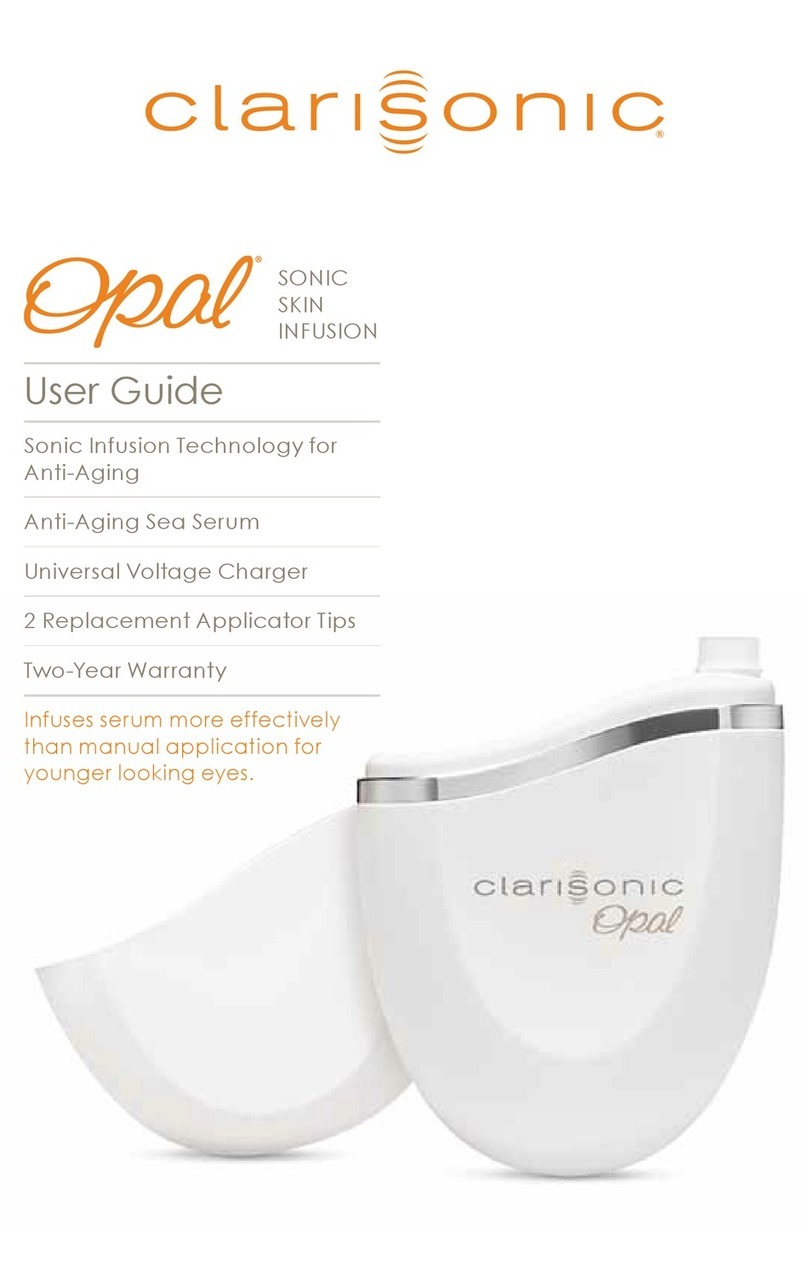
Clarisonic
Clarisonic Opan user guide

mychway
mychway LT-110E user manual
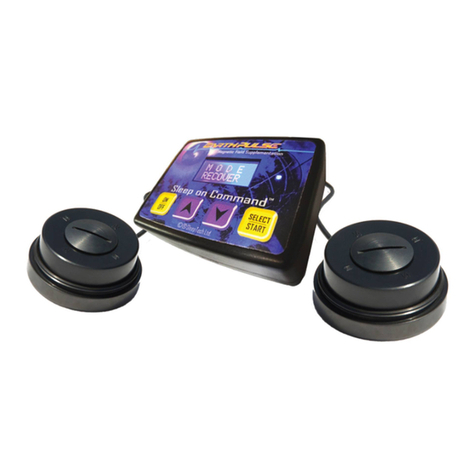
EarthPulse
EarthPulse v.5 Pro quick start guide
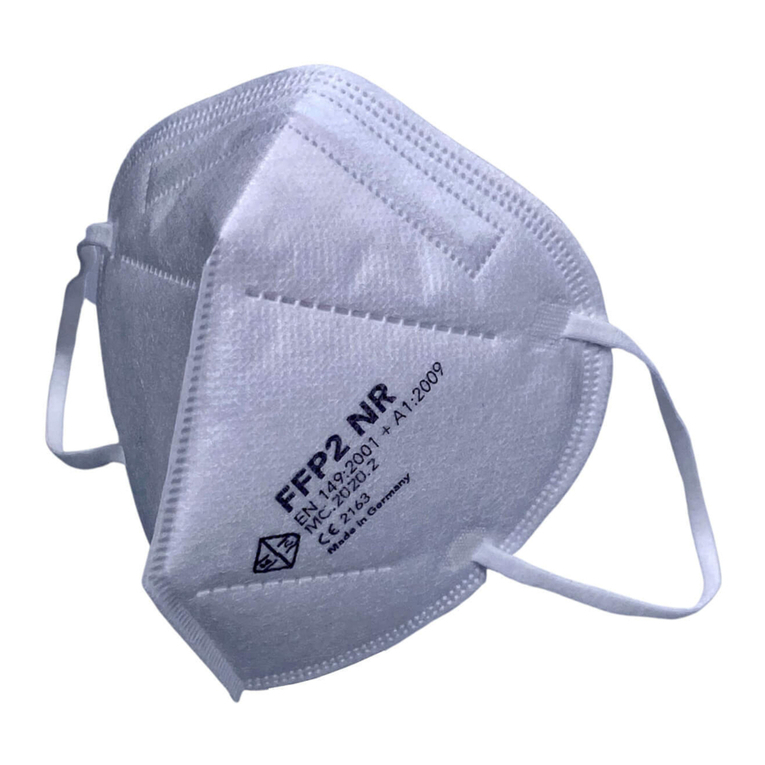
MC MEDICAL
MC MEDICAL FFP2 NR Operating instructions and instructions for use
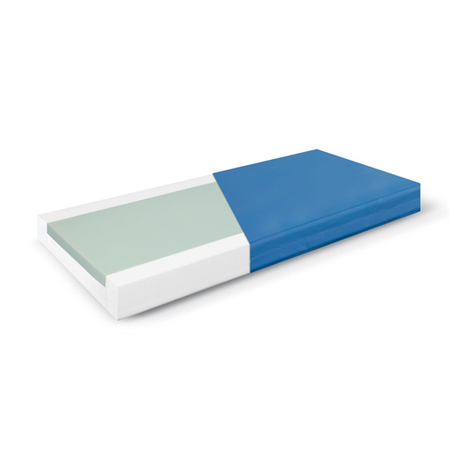
LINET
LINET EffectaCare 10 User manual and technical description

JAMES MARTIN VANITIES
JAMES MARTIN VANITIES TAMPA 901-M29.5-GW installation instructions
